Birdwatching is a hobby that anyone with access to a park can enjoy. To see rare and larger species, though, you’ll do well to visit some of the country’s wilderness areas. And of course, no U.S. state has more wilderness than Alaska. In the summer, when tourists are more likely to visit, millions of migratory birds pass through. Depending on where you go, you can see a large number of shorebird and wetland species. Wildlife is so plentiful in the state, you don’t have to go far to find a species that will impress you. But we’ve assembled a list of 10 birding hot spots that will give you the best opportunities to see a large number of species you may not have seen before.
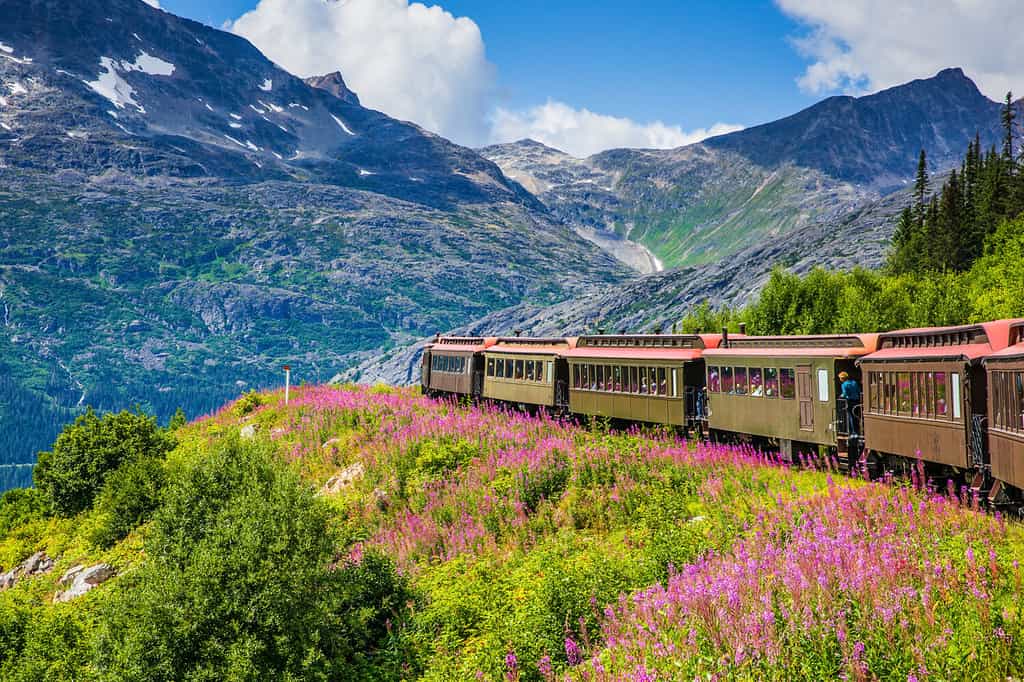
Alaska offers spectacular scenery and opportunities to spot birds in every season of the year.
©SCStock/Shutterstock.com
1. Mendenhall Wetlands
Mendenhall Wetlands is super convenient for birding tourists because it’s located right next to the airport in Juneau, the capital! You’ll find waterfowl and shorebirds, both local and migratory. Some of the species you might spot in the summer are the Arctic tern, orange-crowned warbler, flycatcher, red-throated loon, and many different kinds of ducks.

The orange-crowned warbler is one of the species you might see at Mendenhall Wetlands.
©Hayley Crews/Shutterstock.com
2. Point Bridget State Park
This park is located about 25 miles north of the Juneau airport. Along its system of trails, visitors may spot any one of 200 species of birds. A few examples include the harlequin duck, black oystercatcher, Pacific loon, three-toed woodpecker, horned grebe, pigeon guillemot, and the common murre.

Pacific loons are waterfowl with distinctive snake-like camouflage patterns on their necks and back.
©Sophia Granchinho/Shutterstock.com
3. Potter Marsh Bird Sanctuary
This sanctuary is located 20 minutes from the Anchorage Coastal Wildlife Refuge. If you’re fortunate, you can pick out a good many of the 130 species found there. Waterfowl and trumpeter swans are particularly popular with guests. Other migratory species include the northern harrier, merlin, tundra swans, and many more. In the summer, look out for species like dabbling ducks, red-necked grebe, sandhill crane, alder flycatcher, northern waterthrush, and common redpoll.

Sandhill cranes are 3 to 4 feet tall, weigh 6 to 12 pounds, and have a wingspan of 6 to 7 feet.
©iStock.com/Bkamprath
4. Resurrection Bay
Resurrection Bay, located near Seward on the south-central coast, is a good place to go for birdwatching in Alaska. A great way to do it is by taking a marine cruise to see birds (and maybe some whales!) The cliffs above the bay are a preferred perching and nesting site for many species of birds. A few of the many species you might see there are: puffins, murres, kittiwakes, bald eagles, gulls, scoter, the harlequin duck, scoters, red-throated loon, sooty shearwater, fork-tailed storm-petrel, Pacific loon, and red-faced cormorant.
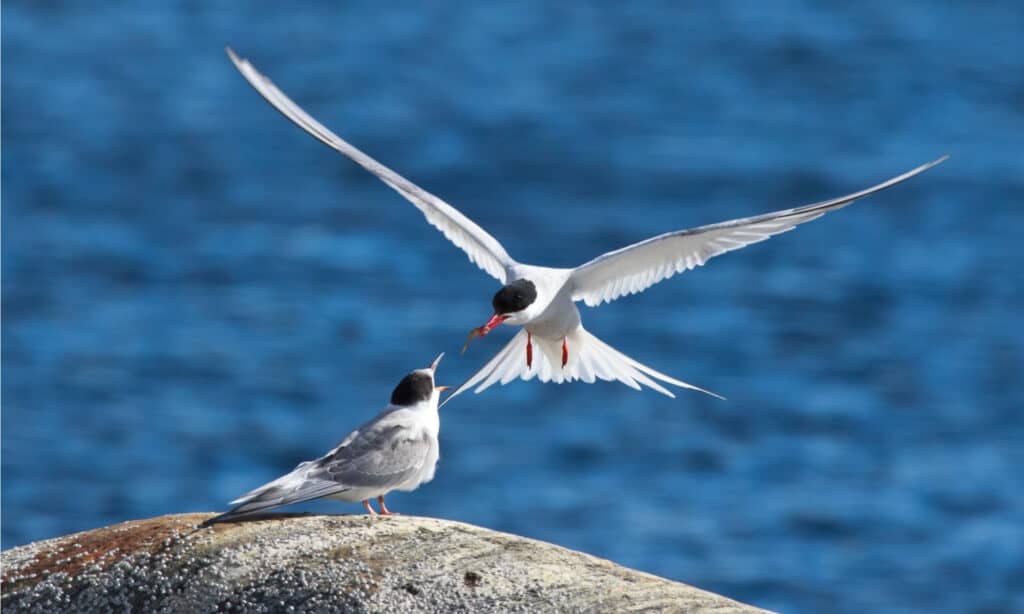
Arctic terns migrate an astounding 25,000 miles annually from Alaska to Antarctica.
©Monticola/Shutterstock.com
5. Glacier Bay National Park
Glacier Bay National Park on the Alaska panhandle is immensely popular with tourists for its spectacular wilderness views. Visitors often arrive at the town of Gustavus, then can take a 10-mile road to Bartlett Cove. Spotting birds can be as easy as just standing on the town dock and looking out over the icy water. You might see loons, scoters, several species of gulls, and many others. Those who choose to take a ranger-guided water tour around the bay will see not only glaciers and whales but sometimes glimpse puffins, bald eagles, Arctic terns, and other memorable species.
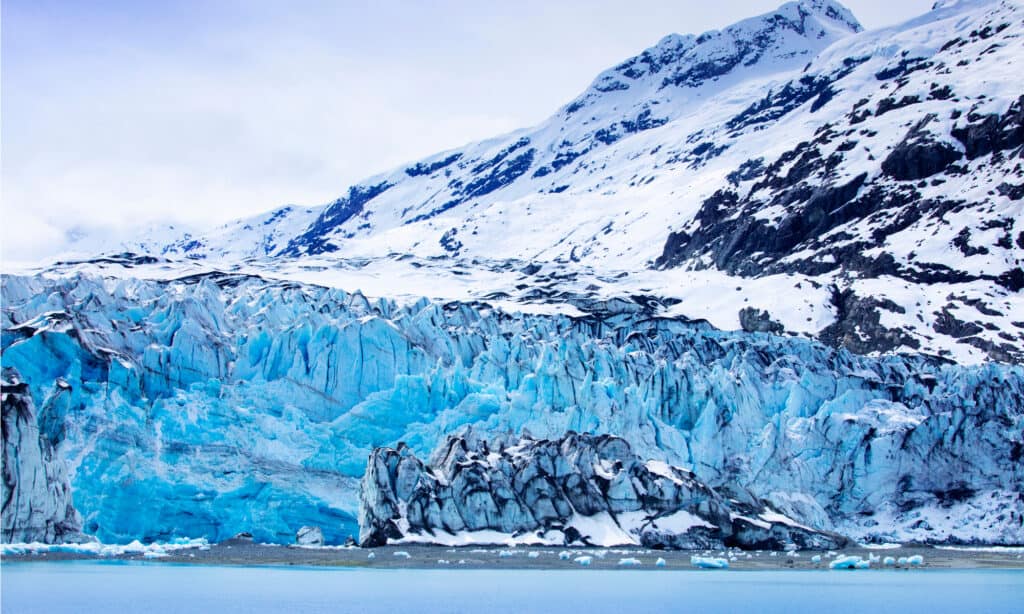
In addition to a wide variety of birds, visitors to Glacier Bay National Park may spot whales.
©wu hsoung/Shutterstock.com
6. Tern Lake
Tern Lake is a highly popular site for viewing wildlife in Alaska. It’s located on the Seward Highway with a viewing platform, interpretive signs, and picnic spots. In addition to bears, beavers, and moose, the habitat hosts bald eagles, common loons, arctic terns, northern water thrushes, and golden-crowned sparrows.
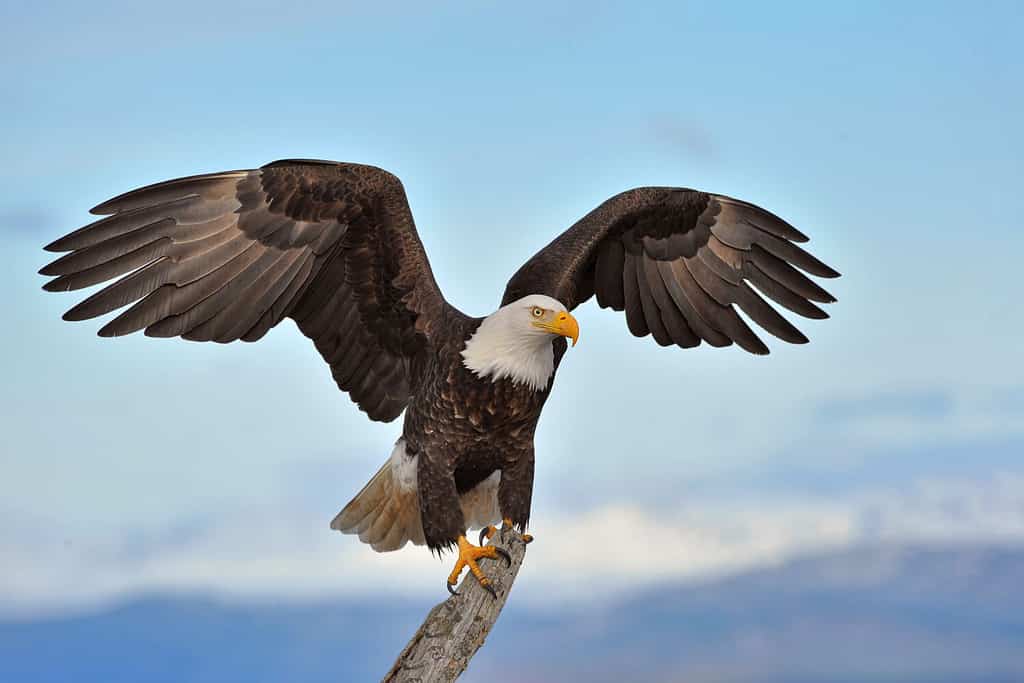
Visitors to Tern Lake might take some once-in-a-lifetime photos of bald eagles, America’s iconic species.
©FloridaStock/Shutterstock.com
7. Homer
Homer, at the end of the Sterling Highway, is a favorite site for birdwatching in Alaska. Some of the area’s nesting sites host up to 15,000 birds at a time! One of the best places there to spot shorebirds and seabirds is the Homer Spit. This is a four-mile-long peninsula with great opportunities to see birds along the road. Some of the various species you might see there are the black oystercatcher, wandering tattler, rock sandpiper, Pacific golden plover, surfbird, bar-tailed godwit, black turnstone, or the red-necked phalarope.

Pacific golden plovers have bold black and brown blotches against a buff to cinnamon background.
©Rajh.Photography/Shutterstock.com
8. Rookery Falls
If you want to see an enormous number of birds all in one place when you go birdwatching in Alaska, check out Rookery Falls in Prince William Sound. It’s located across Passage Canal from the port of Whittier, southeast of Anchorage. Guests can take a day cruise or kayak on their own to see a massive colony of over 8,000 black-legged kittiwakes. Other species also drop by, including seagulls, bald eagles, and pigeon guillemots. To top it all off, there’s a spectacular waterfall, making it well worth the effort to visit this magical nesting ground.
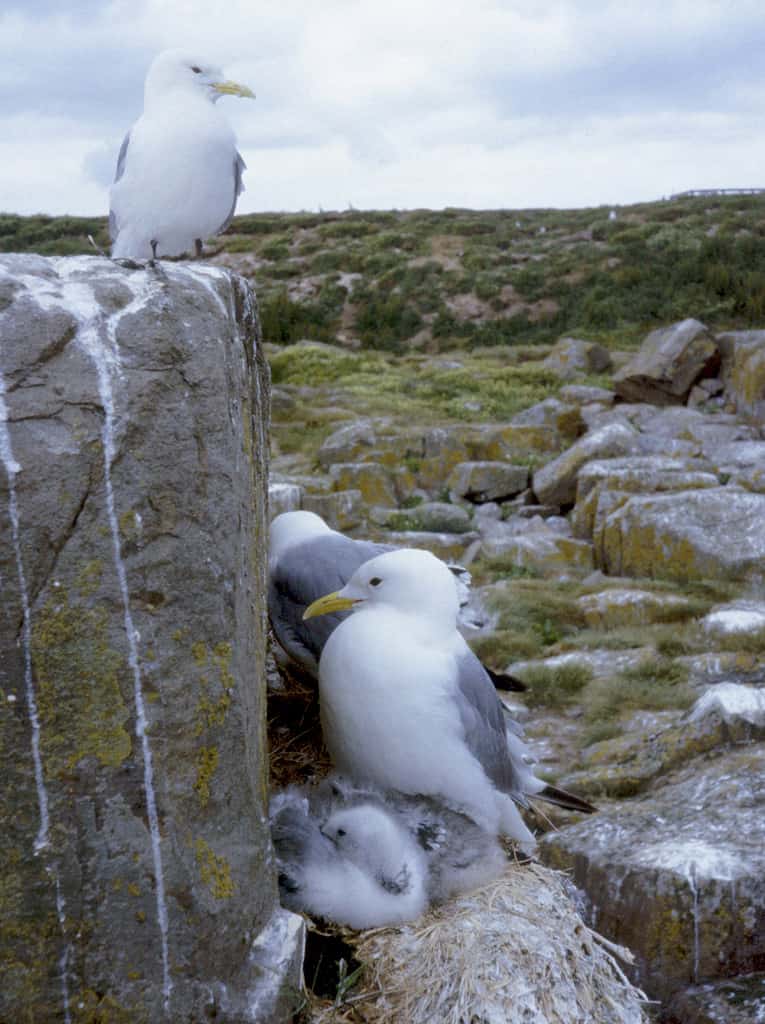
Black-legged kittiwakes nest in large numbers at Rockery Falls.
©MPF / CC BY-SA 3.0 – License
9. Denali National Park & Preserve
Most visitors to Denali National Park & Preserve come to see Denali which, at 20,310 feet is the tallest mountain in North America. As impressive as it is, there’s so much more to see at the park. With six million acres of land, visitors can see several northern habitats: taiga forest, alpine tundra, and mountains. The park is unfenced, so guests will see wildlife living completely free.
Denali National Park has a large number of resident birds as well as a changing cast of migratory birds. Migrations happen in the spring and fall, but summer is a good time to spot species that have already migrated there to escape the summer heat down south. Species to look for in Denali include blackpoll warblers, golden eagles, black-billed magpies, Canada jays, common ravens, gyrfalcons, long-tailed Jaegers, and northern hawk owls.
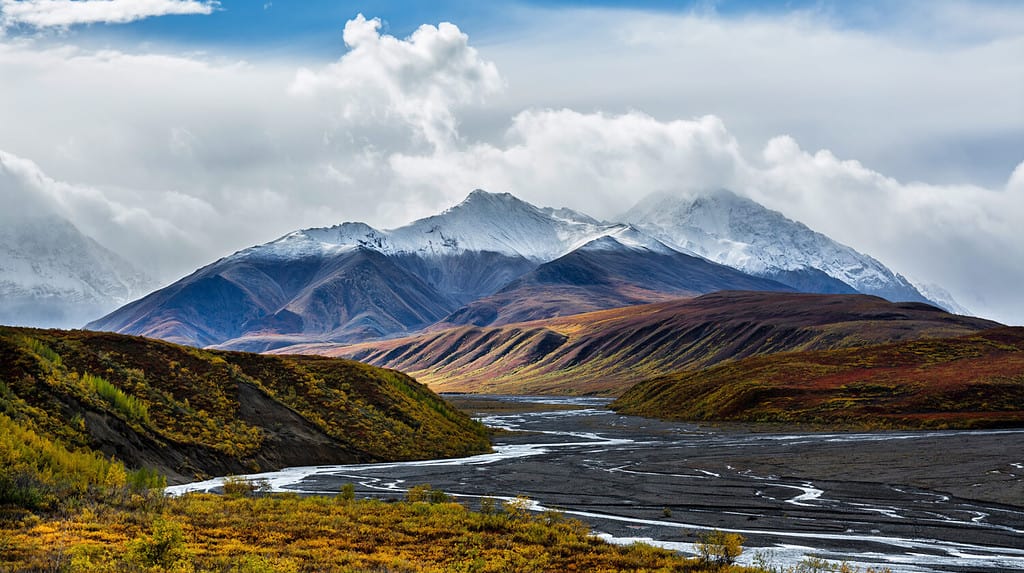
Denali National Park offers spectacular unspoiled views, unfenced wildlife, and birding galore!
©Bryan Neuswanger/Shutterstock.com
10. Kodiak Island
Kodiak Island, off the southwestern coast, is a great place to go birdwatching in Alaska. Over 240 species of birds nest on Kodiak Island at different times of the year. May through September are considered a prime birdwatching period. Some favorites are black turnstones, black-legged kittiwakes, black oystercatchers, rock sandpipers, harlequin ducks, Steller’s eiders (a threatened species), pine grosbeaks, harlequin ducks, Barrow’s goldeneyes, and bald eagles.

Steller’s eiders are small, compact diving ducks.
©AndreAnita/Shutterstock.com
Time to Pack Your Bags and Binoculars!
Honestly, it’s hard to imagine a more thrilling place for birding than Alaska. With its vast unspoiled wilderness and the large numbers of both resident and migratory birds, it’s a haven for many species. And even though you may be going there for the birds, you’re sure to spot some other wildlife as well that will fill you with wonder and awe. Sure, Alaska might be a long flight from the lower 48. But think of how far those birds are flying to meet you there!
The photo featured at the top of this post is © Harry Collins Photography/Shutterstock.com
Sources
- Audubon, Available here: https://www.audubon.org/news/birding-alaska
- Only In Your State, Available here: https://www.onlyinyourstate.com/alaska/birding-hotspots-ak/
- Alaska , Available here: https://www.alaska.org/guide/birding
Thank you for reading! Have some feedback for us? Contact the AZ Animals editorial team.







